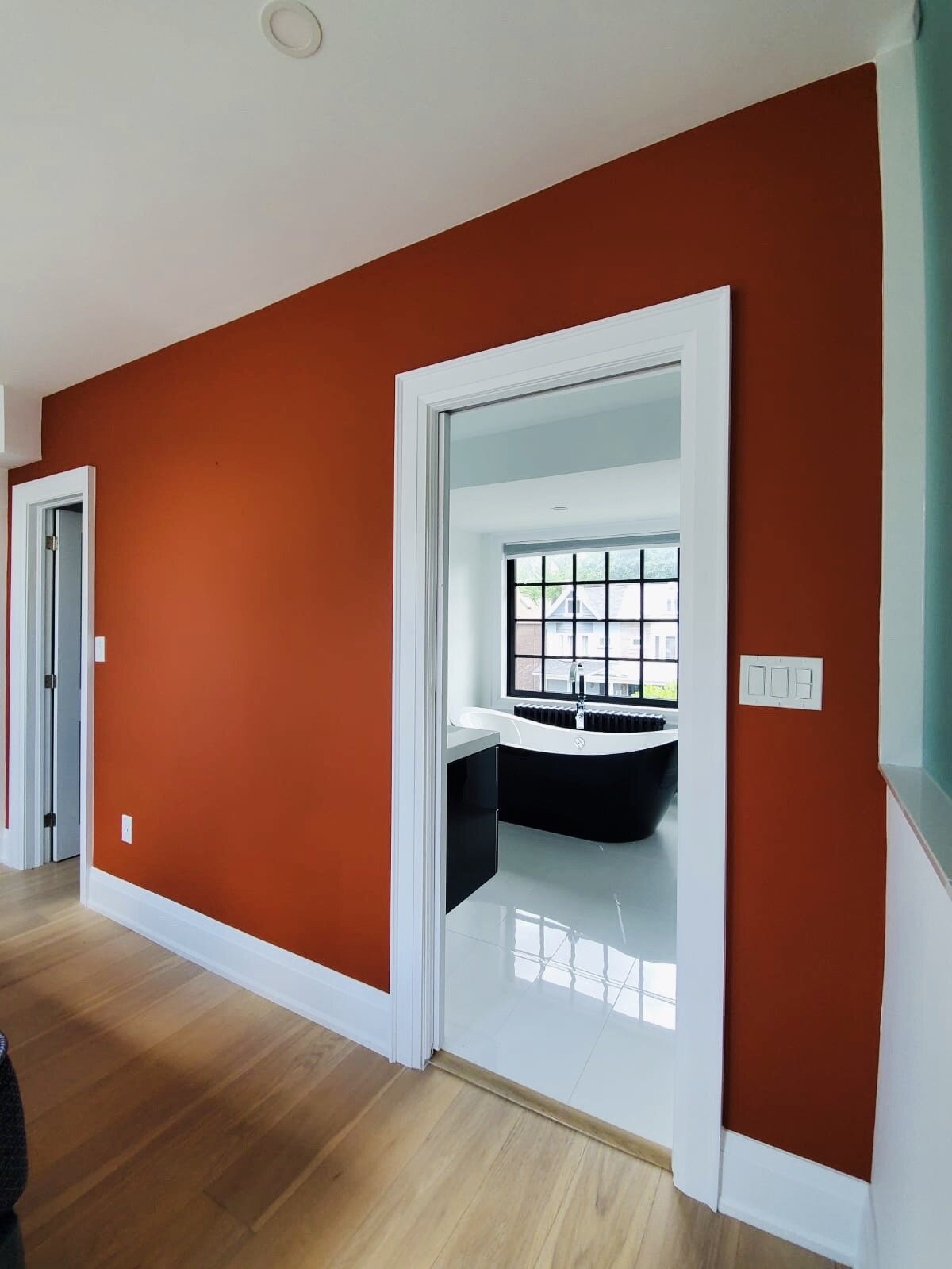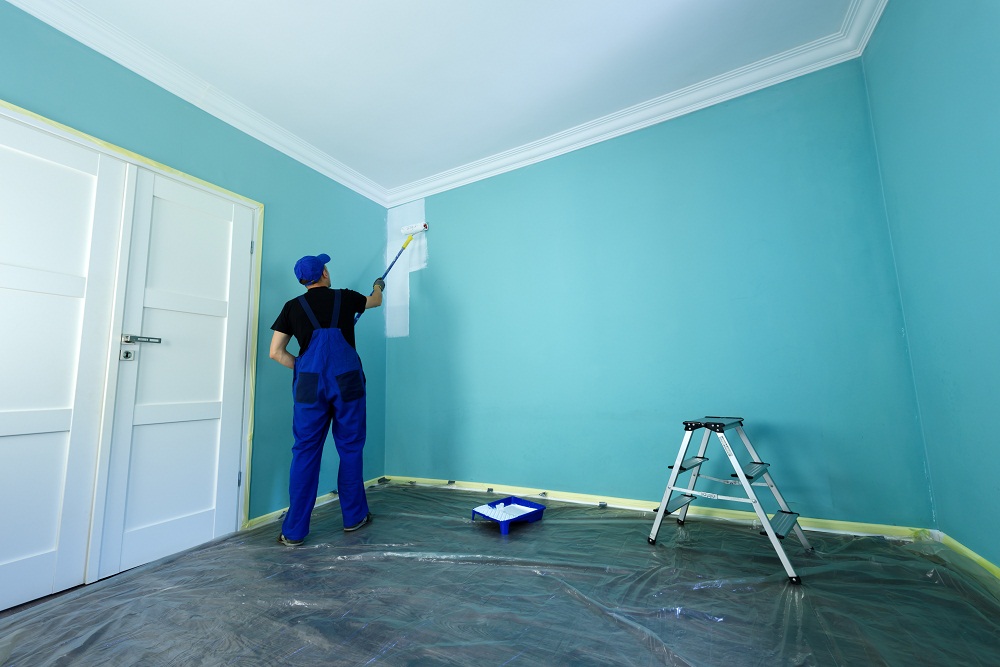Renew Your Space With Inside and Outside Home Painting
Revitalizing your space through both indoor and outside house painting is a tactical strategy to improving your home's total setting and market worth. Comprehending the lasting advantages of high quality paints goes past looks; it entails considerations of resilience and upkeep.
Advantages of Residence Paint
Changing a home's look through paint not just enhances its visual charm yet likewise gives considerable useful advantages. A fresh coat of paint functions as a safety obstacle versus environmental elements, such as dampness and UV rays, which can result in wear and tear over time. This safety layer is especially vital for exterior surface areas that face the force of the climate.
Furthermore, interior painting can boost air quality by utilizing low-VOC or zero-VOC paints, which minimize unsafe discharges and advertise a healthier living atmosphere. This is specifically useful for households with kids or people with respiratory system problems.
Furthermore, house paint can increase residential or commercial property value. A well-kept home with a contemporary color combination brings in potential customers, making it an audio financial investment for house owners wanting to sell. Regular paint additionally mirrors a sense of treatment and attention to detail, improving the overall marketability of the residential or commercial property.
Finally, paint enables property owners to share their individual design and create a welcoming ambience. Whether upgrading obsolete colors or revitalizing faded walls, paint can revitalize a room, making it really feel new and welcoming. Overall, the advantages of home paint are both aesthetic and practical, making it a necessary element of home maintenance.

Picking the Right Colors
Picking the right shades for both exterior and interior residence painting is an essential element of enhancing a home's aesthetic charm and worth. Shade options can drastically influence the understanding of area, state of mind, and architectural features. When considering outside colors, it is vital to consider the surrounding setting, neighborhood appearances, and any type of house owner association standards. Natural tones, as an example, can develop an unified blend with nature, while brighter shades may provide a modern pop that stands apart.
For indoor rooms, shades must be chosen based on the feature of each room. Softer shades promote peace in bed rooms, while vivid colors can stimulate living locations or playrooms. Florentina’s Painting LLC Interior Painting. Additionally, think about exactly how all-natural light connects with colors throughout the day; a shade might appear various under varying lights problems
Additionally, it's valuable to produce a cohesive color palette that flows throughout the home, linking various areas while enabling for individual expression in each space. Utilizing shade examples and examples can cost to have interior house painted help in envisioning the final outcome, ensuring that your options line up with your vision and boost both the exterior and interior charm of your home.
Interior Paint Techniques
When it comes to executing a successful interior painting job, recognizing different methods is important for achieving a sleek and specialist finish. One fundamental strategy is the "cut-in" approach, which includes utilizing a brush to repaint edges and corners prior to rolling the wall surfaces. This develops tidy lines and avoids roller marks.
An additional effective technique is using various roller nap lengths. A shorter snooze is excellent for smooth surfaces, while a longer snooze can aid cover distinctive wall surfaces, ensuring an also application of paint. Furthermore, employing a "back-rolling" strategy after spraying linked here can assist to equally disperse paint and improve attachment.
For even more complex layouts, strategies such as stenciling or sponging can add depth and character to a room. These techniques call for precision and method but can internet yield sensational results.

Last but not least, proper surface area prep work-- including cleaning, fining sand, and priming-- is important to any kind of painting method. This not only makes sure better paint adherence yet also lengthens the life of the finish. By mastering these interior painting techniques, home owners can transform their rooms with self-confidence and creative thinking.
Exterior Paint Fundamentals
Successfully tackling an outside paint project needs mindful planning and focus to detail. The primary step is to pick high-quality paint that is especially formulated for exterior usage, making certain toughness against the aspects. Take into consideration the climate of your area, as different paints offer varying levels of dampness resistance, UV defense, and temperature level adaptability.
Following, correct surface preparation is essential. Clean surfaces thoroughly to get rid of dust, mold and mildew, and peeling paint. Repair any kind of problems, such as cracks or openings, to produce a smooth substratum for painting. Priming is frequently recommended, specifically for bare or previously unpainted surface areas, as it improves adhesion and boosts the paint's longevity.
Selecting the right tools is equally vital. Purchase quality brushes, rollers, and sprayers to achieve a specialist surface. Focus on the application method; functioning in convenient areas and using even layers will certainly generate optimal results. Lastly, consider the timing of your job. Suitable problems consist of low moisture, moderate temperature levels, and minimal wind, which can impact drying times and paint adherence. By concentrating on these fundamentals, you can make certain an effective and aesthetically pleasing external paint job.

Maintenance Tips for Long Life
Routine upkeep is important for maintaining the long life and look of both interior and exterior paintwork. To ensure your paint lasts, begin with routine evaluations. For exterior surface areas, look for indicators of peeling, fracturing, or fading, and address these concerns without delay to stop more damages. Clean surface areas on a regular basis to remove dust, mold, and grime, making use of a moderate cleaning agent and soft brush as needed.
For indoor rooms, keep a constant temperature and moisture level to decrease paint degeneration. Dirt wall surfaces and baseboards regularly and consider using touch-up paints to cover small scuffs or scratches.
Additionally, examine and keep caulking around doors and windows; replacing used or fractured caulk will prevent dampness breach, which can jeopardize paint top quality. When painting, choose premium paints that use far better sturdiness and resistance to environmental aspects, making sure a longer-lasting surface.
Verdict
In final thought, house paint works as a powerful device for revitalizing both the inside and outside of a home. The advantages prolong past mere visual appeals, boosting residential property worth and improving air quality through using high quality products. Careful consideration of shade selection, together with the application of effective methods, makes certain an effective makeover. Implementing upkeep methods can prolong the life of the paint, protecting the investment made in the revitalization process.